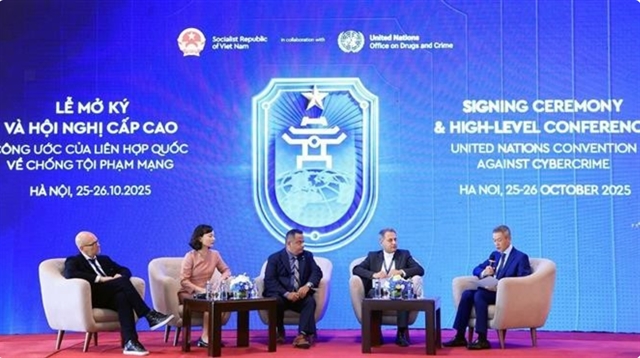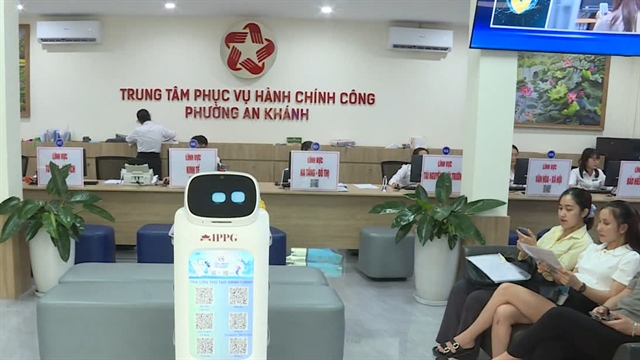 Society
Society
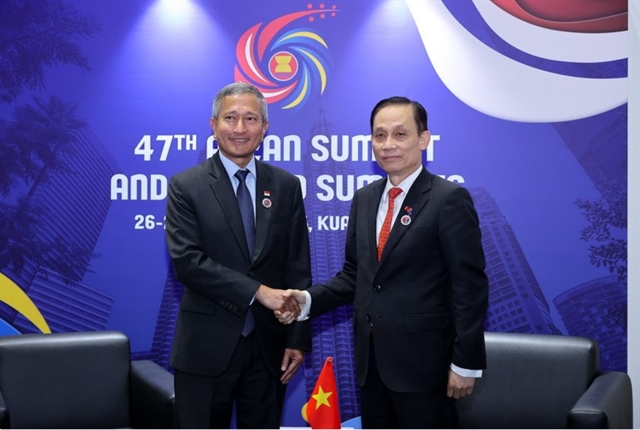
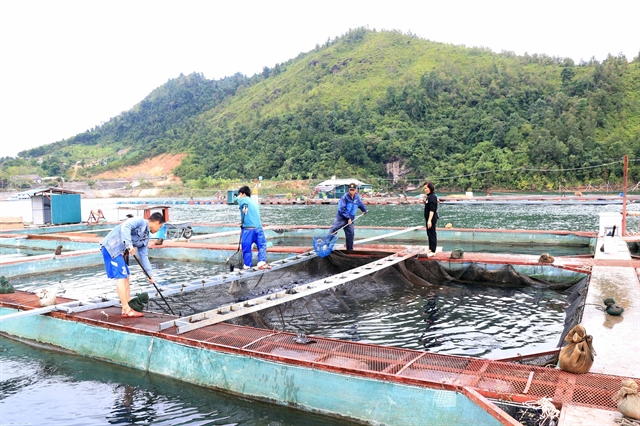 |
| People harvesting fish in Sơn La Hydropower reservoir. — VNA/VNS Photo Quyết Thắng |
SƠN LA — People in Quỳnh Nhai District of the northern province of Sơn La in recent years have successfully developed commercial caged fish farming in Sơn La hydropower reservoir.
Earning hundreds of millions of đồng from fish faming has helped many local households get rich.
Thanks to being raised in a natural environment and following the VietGAP process, the fish of the reservoir have flesh that is firm and delicious so they are sold at a higher price.
As one of the first households to do caged fish farming in Chiềng Bằng Commune, after more than 10 years, Lò Văn Khặn's family in Bung Én Village has more than 110 fish cages.
In addition, Khặn mobilised 18 other households in the village to establish Chiềng Bằng Fisheries Co-operative.
Up to now, the co-operative has over 900 fish cages, bringing an average income of VNĐ5 million (US$220) per month for each member.
Khặn said: “At first, I only dared to invest nearly VNĐ100 million ($4,300) into six fish cages.”
“After few months, I realised that the economic efficiency from fish farming was higher than planting so my family decided to expand the scale,” Khặn said.
Currently, his family raises fish in a semi-industrial method combined with locally available food sources, so the quality of his fish is delicious and popular with many consumers.
Chiềng Bằng Commune was formerly considered the rice bowl of Quỳnh Nhai District, but when the Sơn La Hydropower Plant started accumulating water, the production land area was narrowed, affecting the production of local people.
In 2010, thanks to the district's model of caged fish farming, the local people found a new direction of production that exploited the water surface of the hydropower plant reservoir to develop caged fish farming.
Up to now, the commune has more than 3,000 fish cages with total output of 350 tonnes.
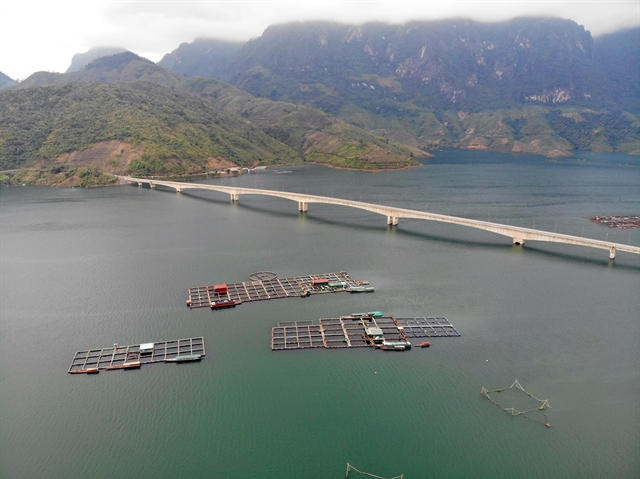 |
| Fish cages in Sơn La Hydropower reservoir. VNA/VNS Photo Quyết Thắng |
Mè Văn Phái, the commune’s chairman said: “After completing the resettlement of people from the area of the Sơn La Hydropower Plant, the commune focused on economic development and stabilising people's lives.”
“Considering aquaculture and fishing as strengths, the commune has mobilised agencies and organisations to create favourable conditions for people to borrow loans and participate in training courses on technology transfer to help people change their production habits from monoculture on sloping land to developing caged fish farming in the reservoir,” Phái said.
According to the local authority, Quỳnh Nhai District has totaled more than 5,000 fish cages with yearly output of 3,000 tonnes.
To facilitate consumption and branding, households have joined together to establish many co-operatives of aquaculture and seafood.
Hải Vân Co-operative is currently a leading establishment in aquaculture and seafood in Quỳnh Nhai District.
On average, the co-operative supplies the market with about 180-200 tonnes of fish each crop.
With the average selling price from VNĐ120,000-130,000 per kilo of catfish halibut, the cooperative's annual revenue reaches about VNĐ2 billion ($85,000). After five years of implementation, this is considered to be an effective economic model, contributing to the development of fish farming in the district.
Phí Hải Vân, director of Hải Vân Co-operative, said that in order to meet the higher requirements of customers, he applied new feeding techniques so that the fish flesh is firmer and has less fat.
Accordingly, when the fish are 18 months old and reach an average weight of about 4-5 kilos, he starts to increase the movement of the fish by pulling and dropping the net up and down.
He does the method twice a day in the early morning and late afternoon for six consecutive months. Thanks to a lot of exercise, the fish lose fat and become firmer.
In addition, the cooperative also applies technical processes according to VietGap standards that combine with a reasonable diet for the fish to grow well, creating Quỳnh Nhai fish.
In Quỳnh Nhai District, the exploitation of more than 10,500ha of water surface in the Sơn La hydropower reservoir to develop aquaculture and fishing has solved the problem of a lack of cultivated land.
It also creates a breakthrough in agricultural production restructuring, changing farming practices and breaking the monoculture of rice.
Notably, the large surface of the reservoir is a favourable environment for people in nine communes along the Đà River to exploit natural fish resources and produce related products such as fish sauce, dried fish products and shrimp paste.
Up to now, there is one fish product that meets the 4-star OCOP (One Commune One Product) standard.
Điêu Thị Hà, head of the district’s Department of Agriculture and Rural Development Department, said that during recent years, the development of OCOP products from fish has brought about efficiency in aquaculture production, thereby raising awareness for co-operatives, businesses and households regarding production, marketing and branding.
With branding promotion and meeting OCOP standards, the products from Đà River fish have become more economically valuable and brought higher incomes for the local people.
In the coming time, the district will further guide households and co-operatives on sustainable development and new technical and technological applications for organic production to improve product quality and economic value.
Besides that, the authority will help farming households and co-operatives connect with businesses to find markets for products. — VNS



